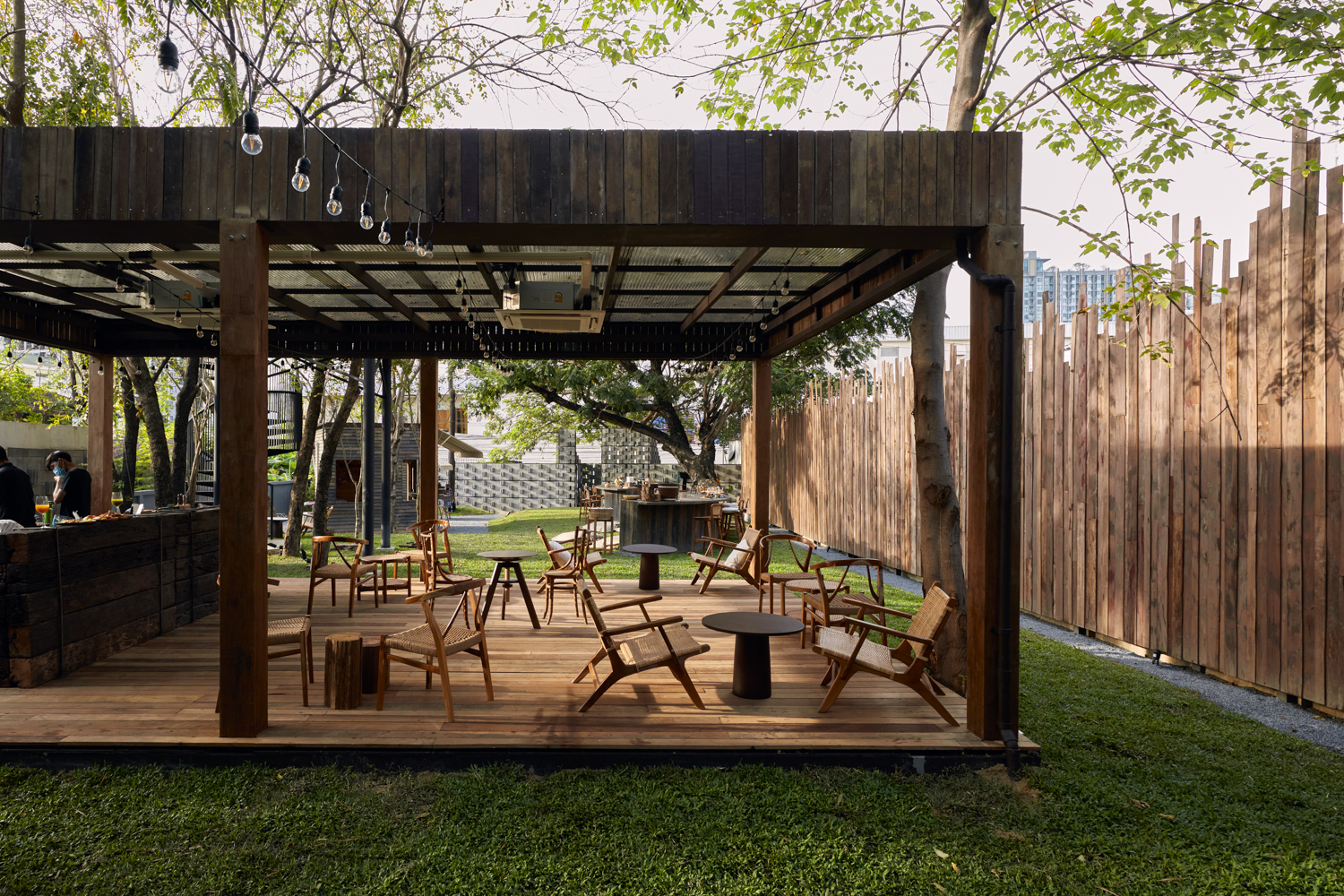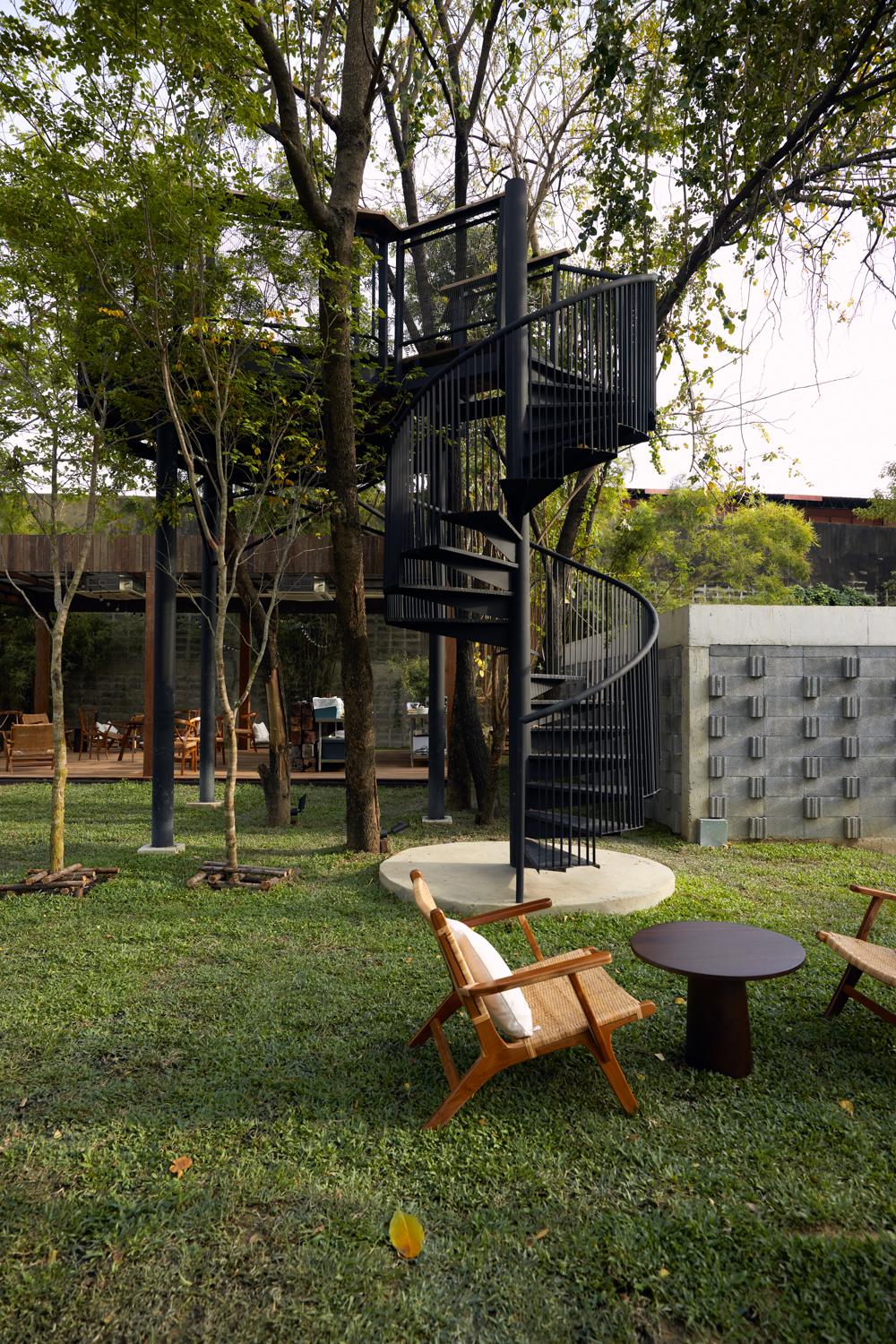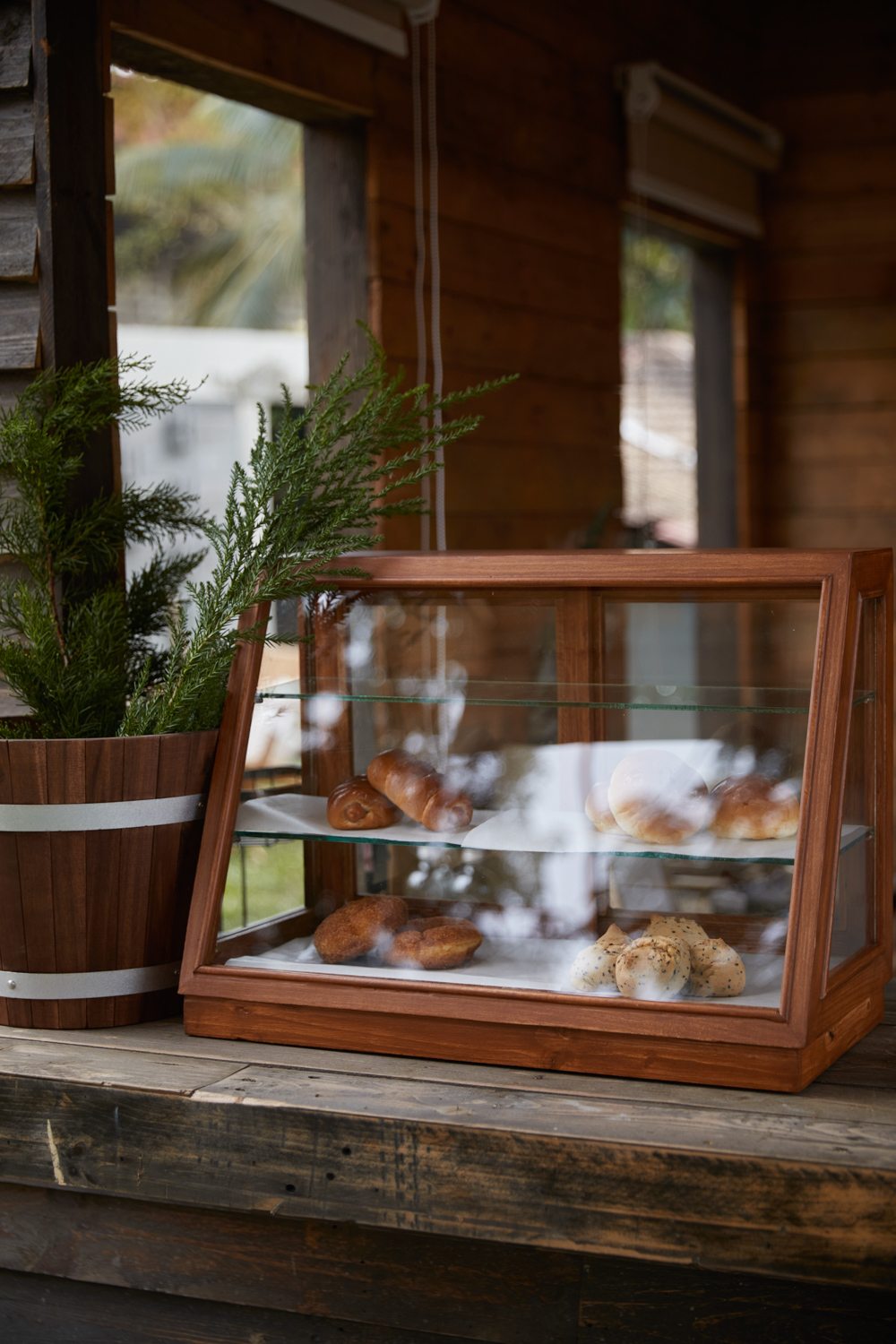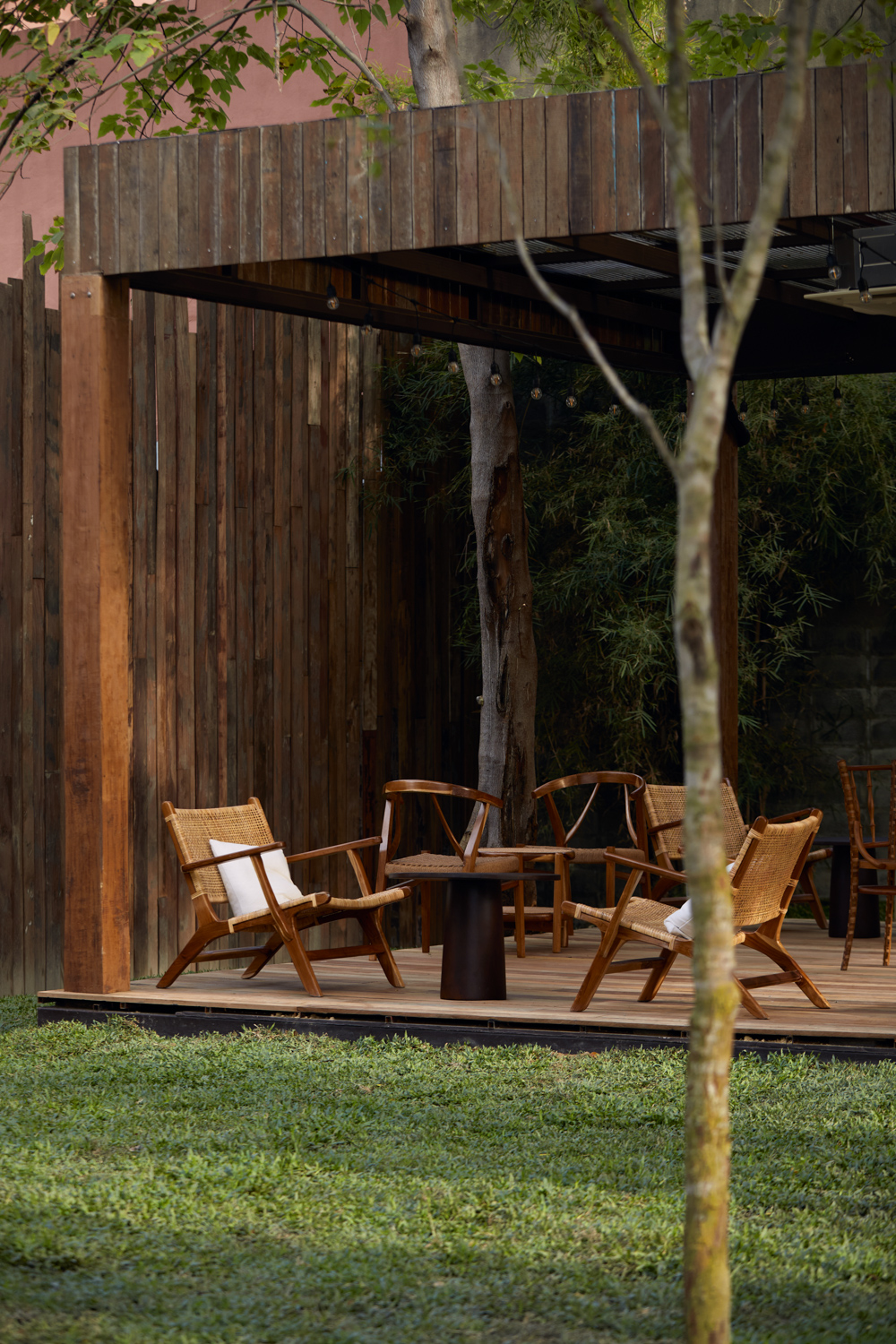THE WOOD LAND, AN UP-AND-COMING CAFE IN SUKHUMVIT, CATERS TO PEOPLE’S DESIRE FOR NATURE WITH THE DESIGN UNDER THE CONCEPT OF ‘URBAN FOREST’ FEATURING AN OPEN SPACE THROUGHOUT THE PROJECT
TEXT: PRATCHAYAPOL LERTWICHA
PHOTO: THANAWATCHU
(For Thai, press here)
With the ongoing pandemic and prolonged lockdown measures, people desire to be closer to nature, to bask in natural air in a beautiful semi-outdoor space where air conditioning is not needed. The statement has been proven to be true, especially if judging from how THE WOOD LAND, an up-and-coming newbie of the Sukhumvit’s cafe scene whose location in Soi Sukhumvit 51 has been frequented by visitors throughout the day despite the absence of air conditioning in the space.


“I think the people of Bangkok still need this particular type of space,” said Pimsiri Nakswasdi or Ploen, the owner of the cafe. “People still want to get in touch with nature and when there’s that need, I intentionally designed the space to be open instead of enclosed.”
THE WOOD LAND is Pimsiri’s latest cafe project. She’s a veteran in the coffee business with Coffeeology, a premium establishment located in Central Embassy shopping mall that targets coffee buffs, and Coffee 101, a grab and go coffee place designed and operated to cater to office workers, as the other two cafes under her wings (she’s also the owner of ploendochome, a house that was featured in art4d last year). After gaining experiences in running cafes inside a shopping mall and office building, Pimsiri became interested in creating a space where people can be subsumed in the green natural surrounding while enjoying a nice cup of coffee. When she came across an empty plot of land for lease in Soi Sukhumvit 52, distinctive not only for its prime location with a waking distance from BTS’ Onnut station, but the large trees growing inside the space, she didn’t hesitate to turn it into her own little cafe where nature takes the center stage.


Conceptualized ‘urban forest’, just like the name THE WOOD LAND gives away, the design welcomes visitors with walls of concrete blocks used in their bare, natural form. The arranged pattern adds a dynamic dimension when light and shadow cast on the surface, interestingly blending the cafe to its urban surroundings. The fence plays its part as the transition space that fuses the exterior and interior together.
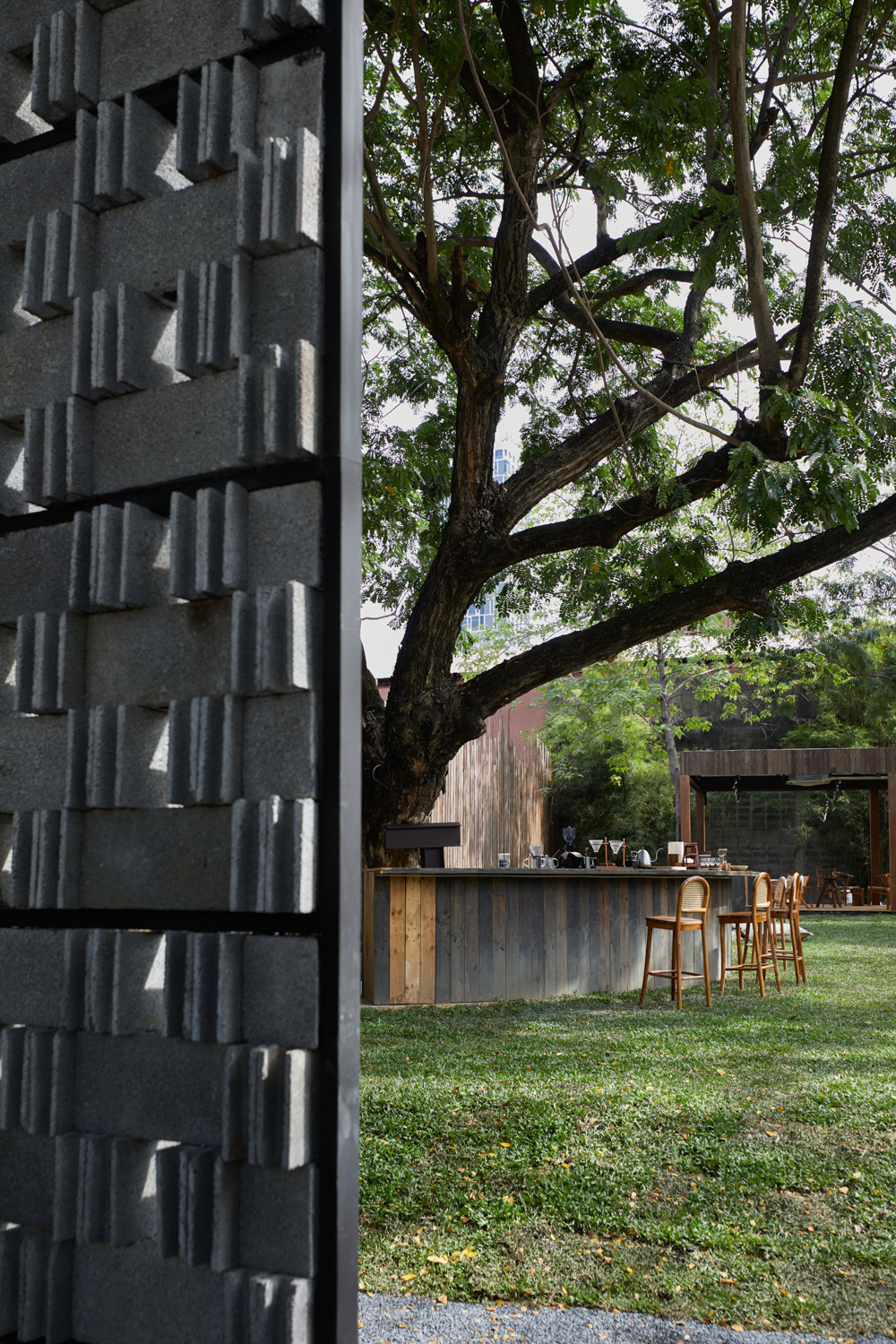
Walking through a small court where a large tree is growing, one gets a glimpse of what’s waiting inside. The main space of the cafe houses a towering rain tree and luscious green yard. The floor is designed to have thoughtfully elevated levels with a layout of buildings that creates the landscape and feel of a small village. The two buildings at the front are small wooden structures where the food, pastries and beverages are prepared and served. Underneath the rain tree is a long bar with stools for clients to enjoy their drinks and dishes. A pavilion is located further into the property for those who prefer a more shaded area. There, houses, an open kitchen and a staircase that leads up to an observation space overlooking the cityscape. For those who are looking for more privacy, there are additional seats further to the back. All the aforementioned functional spaces are all open and while some are air conditioned, none are enclosed by any walls.

Most of the materials used with this project are simple or recycled materials such as the concrete blocks from which the walls are built, or the wood taken from an old traditional Thai house was used to build the fence, arranged into a pattern that visually mimics the vertical structures of nearby high rises or the wooden railroad ties that the the kitchen counter is made of. The materials are chosen not only for their highly natural physical attributes but because they are economical and some can be reused after being dismantled.



Pimsiri’s initial intention was to open THE WOOD LAND for only three months before turning the cafe into an activity space for rent. However, with the overwhelming feedback from visitors and cafe hoppers, she made the decision to keep the place open longer. “I was very worried at first that it would be too hot and people weren’t going to like it. But at the end of the day, the feedback has proven my belief that there are still people who want and like this kind of space.” The next challenge for THE WOOD LAND is going to be quite a big obstacle to overcome, and that is Bangkok’s local climate, summer and rainy season, to be precise. The coming months mean a different situation from the early months of the year when the weather is still nice. But it is a new challenge that can bring new possible opportunities. “We do have to think about how to manage the space when summer comes and the rainy season begins. We may update the design, giving it a different feel with additional roof structures to prevent the sun and the rain. It is a new challenge that can end up creating a different space. THE WOOD LAND can become a seasonal cafe or we may take the kiosk and wooden pavilion to another place and operate a different site-specific establishment. THE WOOD LAND can become other possible spaces.” Guess we will have to wait and see how everything will unfold.


